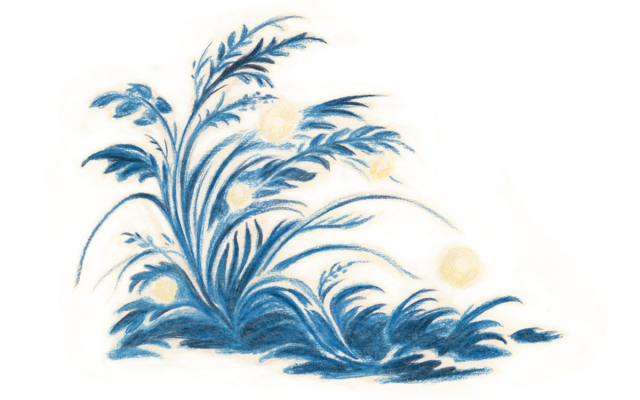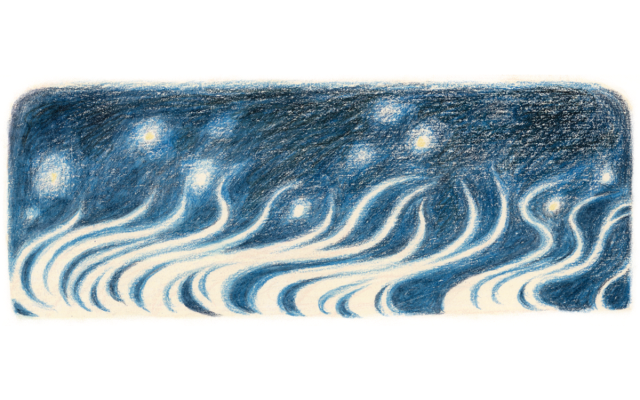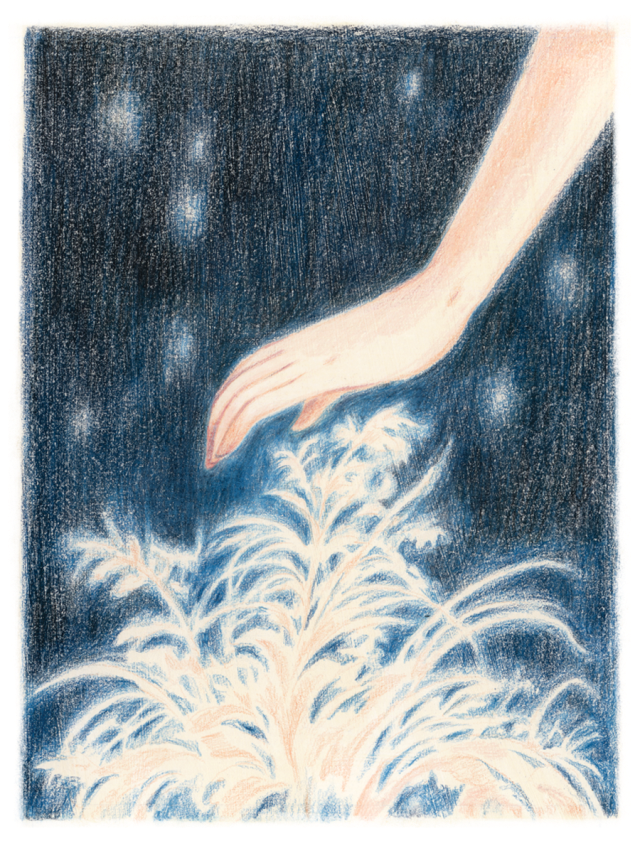Why might a thoughtful Christian choose to take an interest in poetry? Is there something in the poetic imagination that might be of special importance in an age that has been so heavily weighted toward the analytic reasonings of the mind?
In our compartmentalized, individualized, and divided world, the arts are often relegated to something purely subjective, a matter of individual taste, a private aesthetic thrill to compensate for—or numb our minds to—the grimness of a fallen world. Poetry has been reduced to something niche and peculiar; most people aren’t sure what poetry even is, and they assume it’s not for them, irrelevant to their lives. But this view is the exact opposite of how the arts and artists were once seen.
The Romantic poet Samuel Taylor Coleridge saw poetry as a way of knowing, a way of discovering objective facts as valid as any scientific reasoning. For Coleridge, poetry’s function is to help us—just as science might—look out and see what is really there.
In Biographia Literaria, Coleridge writes that we have come to treat nature as an agglomeration of stuff for us to exploit. Through what he calls “selfish solicitude,” we demand from the world all its goods and resources for our own ends without considering its intrinsic being or purpose.
To make that exploitation easier, we throw a “film of familiarity” over it, thus avoiding being challenged by nature’s beauty and otherness. This veil has now come between us and the radiant reality of things, dulling our own vision of the world. Then, because of what Coleridge calls the “lethargy of custom,” we forget that the veil is there at all and think that nature is as dull as we are.

The whole purpose of the arts—not just poetry—is to awaken the mind’s attention. Art helps us remove the film of familiarity and find new ways of glimpsing and telling the truth. The imagination is the vehicle of attention.
We all can think of times when imaginary stories—parables, myths, legends, novels, and films—have suddenly awoken our minds to important truths we had missed or had been denying. We see this supremely in the parables of Jesus, where “made up” stories teach and embody eternal truths, or often many layers of truth at the same time.
In the parable of the Good Samaritan, the simple question “Who is my neighbor?” is answered on multiple levels. We receive insight to see that our neighbor may be the very person we have despised or excluded; at the same time, we are shown what real, practical love for one’s neighbor looks like. And of course, at a deeper level, we have a hint of the supreme love of Christ: how he has come down to tend our wounds and see to our healing.
But stories that help us encounter truths are not only biblical. J. R. R. Tolkien’s Middle-earth is the imaginary world of the Lord of the Rings series, and there we can learn more than we ever knew about loyalty, friendship, courage, and hope. In the enchantments of a fictional realm, we find strength for our trials in this world. The veil is lifted a little. Our sense of wonder is restored. In flashing moments, we discover that reality is itself translucent with glimmers of the “supernatural,” of something holy shining through it.
But how does this happen? The great poet William Shakespeare’s account of his own art in A Midsummer Night’s Dream helps us understand. In describing the work of poetry through the voice of the character Theseus, the Bard gives insight not only into the art of poetry but also into the mysteries at the heart of our faith. Shakespeare writes,
Lovers and madmen have such seething brains,
Such shaping fantasies, that apprehend
More than cool reason ever comprehends. …
The poet’s eye, in a fine frenzy rolling,
Doth glance from heaven to earth, from earth to heaven;
And as imagination bodies forth
The forms of things unknown, the poet’s pen
Turns them to shapes and gives to airy nothing
A local habitation and a name.
The first thing to notice is that Shakespeare distinguishes between two different ways of knowing. To apprehend something is to stretch out your mind and touch just a little bit of it, realizing you have not yet comprehended the whole of it; it is a glimpse, an intuition. To comprehend something, on the other hand, is to know it completely, to get the whole of your mind around it. So we can only begin to apprehend heavenly, invisible things, but we can much more easily and more fully comprehend earthly, visible things.
Poetic imagination can be exercised only by scaling both trajectories: from apprehension to comprehension and back, from heaven to earth and from earth to heaven. We move from a fleeting intuition or an invisible abstraction, a word like love or beauty, down to a real, earthly example of that love or beauty. Or we move from a familiar object to a sudden intuition that what we thought we knew portends much more, as in the poetry of Psalm 1. The tree planted by the waters becomes an emblem of righteous life, and the chaff blown in the wind a symbol of rootlessness.
Some art starts with a glance to heaven, an intuition of the numinous, the sublime, in the invisible realm of qualities. And having had that glimpse, it seeks to find on earth some way of manifesting that apprehended, invisible quality. So the poet and priest George Herbert, trying to embody a little of our experience of speaking to God, offers one image after another—“the church’s banquet,” “the soul in paraphrase,” the “heart in pilgrimage,” “a kind of tune”— hoping that one of these images will unfold a little more of the mystery of prayer for his readers.
Other kinds of art start with attention to the particular, visible material at hand, the world in front of the artist. This art begins with a glance to earth but then moves from earth to heaven. The artist strives to manifest within their earthly material—the paper, canvas, pigment, clay, or metal with which the art is made—those transfiguring glimpses of form and quality that can at any moment shimmer through the stuff of this world, the blaze of hidden flame that makes a burning bush. So R. S. Thomas in his poem “The Bright Field” puts ink to paper:
I have seen the sun break through
to illuminate a small field
for a while, and gone my way
and forgotten it.
By the time he gets to the end of the poem, that brief glimpse has become an invitation to see beyond the field, to turn aside
like Moses to the miracle
of the lit bush, to a brightness
that seemed as transitory as your youth
once, but is the eternity that awaits you.
Whichever end of this divine axis between heaven and earth an artist starts from, the artist’s only means of seeing and establishing a connection between them in art is imagination. Imagination is at the heart of all artistic making, knowing, and seeing, whether that art is poetic or visual. And whether we are poets, artists, or appreciators of art, when we don’t attend to our poetic imagination, we risk numbing ourselves to meaning-making and even to God, the meaning-maker.
Listen to Malcolm Guite read this article, “Something Holy Shines.”
Of special importance to believers is how Shakespeare’s description of the work of poets is ultimately underpinned by the work of God. God is the great maker, the prime embodier; in fact, Shakespeare’s words are a riff on the prologue to John’s gospel: “The Word became flesh and made his dwelling among us” (1:14).
In Shakespeare’s words, “As imagination bodies forth / The forms of things unknown, the poet’s pen / Turns them to shapes.” Imagination and bodies—as contrasting as heaven and earth—are as mysterious as the words Let there be. From darkness comes light; from “airy nothing” comes hospitality, particularity, and availability, “a local habitation and a name.” All poetry is a creative act.
For most people, the “glance” to heaven is just that: a fleeting glimpse, easy to dismiss and overwrite, ignore and explain away. Watching a sunset or standing by a lake, we have a momentary sense of wholeness that is soon overlaid with distractions. A poem can restore that moment and its meaning. The poet—and indeed any artist—by the power of imagination can make a body for that momentary sight, that airy nothing that is always escaping us.
We have that experience constantly returning to poems, paintings, and sculptures that keep giving more than they have, flowing with new life on each visit. The glimpse that imagination has bodied forth in them has a home from which it can grow “to something of great constancy,” as Shakespeare goes on to say.

As a young man, I returned again and again to John Keats’s “Ode to a Nightingale” for the rich beauty, the sensuous intensity of tiptoeing into the darkened garden:
I cannot see what flowers are at my feet,
Nor what soft incense hangs upon the boughs,
But, in embalmed darkness, guess each sweet.
Now, in my 60s, I return to the same poem and am drawn in by “the sad heart of Ruth, when, sick for home, / She stood in tears amid the alien corn.” Yet I cherish still the poem’s window on something beyond this world: “magic casements, opening on the foam / Of perilous seas, in faery lands forlorn.”
The work of imagination is a birthing into life of what was hitherto invisible—the making of something that will have its own life, growth, and history after the artist has passed on. All great art is a bridge with one foot in the world of comprehension—the visible, the earth—and the other foot in the realm of apprehension—the invisible, heaven.
If we are new to poetry, we can begin to walk that bridge through the simple, familiar images a poem gives us—a door, a rose, a mountain—and then wait for those images, in their own good time, to open up the new things that they have to disclose from the world of apprehension. It doesn’t have to happen all at once; it can take a lifetime over many readings, each encounter giving us a little more.
We take the time to do this because what shines beneath the text is of divine import. The divine imagination “bodies forth” all heaven, all meaning, all apprehension into a particular living body born in Bethlehem, whose name is Jesus.
The Incarnation indwells and gives meaning to all our own artistic bodying. All art, whether explicitly Christian or not, depends on and participates in that connection made for us by the one who came “from heaven to earth, from earth to heaven,” who is, and always will be, the living bridge between the two.
Coleridge and Shakespeare are not the only poets who have tried to resolve the tension between reason and imagination as ways of knowing. In his spiritual autobiography Surprised by Joy, C. S. Lewis looks back on the time before his conversion and writes,
The two hemispheres of my mind were in the sharpest contrast. On the one side a many-islanded sea of poetry and myth; on the other a glib and shallow “rationalism.” Nearly all that I loved I believed to be imaginary; nearly all that I believed to be real I thought grim and meaningless.
Lewis wrote those words in the 1950s, looking back on his life in the 1920s. But we also have a poem he penned at the very time he was experiencing this divide between his reason and imagination.
In his posthumously titled poem “Reason,” Lewis compares his soul to the city-state of Athens—the same setting as Theseus’s speech in A Midsummer Night’s Dream. High on “the soul’s acropolis” Reason stands, in the figure of the goddess Athene, amid the pure geometry of the Parthenon. She has access to “celestial light,” and “he who sins against her has defiled his own / Virginity: no cleansing makes his garment white.” In contrast, Lewis describes the figure of Demeter, the fertility goddess whose mysteries were celebrated in the caves below Athens. Demeter, representing imagination, is “warm, dark, obscure and infinite,” the “daughter of Night.”
Then comes the sharp dilemma: Lewis must be true to both goddesses, even though they pull him in two directions. “Tempt not Athene,” he writes, and “wound not in her fertile pains / Demeter.” This tension leads him to cry out for a reconciler. Who can help him integrate both the imaginative depths and the rational heights of his soul? Only then, writes Lewis, could he truly say, “I believe.”
There are a number of remarkable things going on in this poem. First is the suggestion of inner space within the human psyche itself. The soul, the inner Athens, has not only its heights, its acropolis, but also its depths and caves. Who can know it?
Second, the bodying forth of the soul’s distinct powers of reason and imagination in the form of the two goddesses is not a random classical allusion from Lewis to show off his learning. Rather, it is a symbolic reimagination of the inner self as one in which powers beyond the self are at work. Lewis expresses his inner life by saying, essentially, “My problem is I can’t get my inner goddesses together!”

After exploring many paired contrasts—touch and sight, light and dark, clean and defiled—the poem ends with a plea that subtly summons the echoes of its own answer: “Oh who will reconcile in me both maid and mother, / Who make in me a concord of the depth and height?” These are, of course, anticipatory echoes; the poem witnesses to an impasse and points to a hoped-for concord that has not yet arrived. But we who believe know the answer well—as Lewis himself was on the cusp of knowing too.
The answer to Lewis’s question, as it was for Shakespeare, is the Incarnation. The pagan goddesses must be either maid or mother, but the Virgin Mary is both. Through her yes to God, Christ the reconciler comes into the world—the one who reconciles not only man to God but also time to eternity, depth to height, earth to heaven, reason to imagination.
In Christ the reconciler, Lewis found the one who embodied the inner truth of the imaginative myths he loved before he came to faith. In the famous conversation Lewis had with Tolkien on Addison’s Walk in Oxford, Tolkien showed him that the story of Christ was not merely mythical “lies … breathed through silver” but factually true. It was myth made history, a story that could move his imagination and also satisfy his reason. The “two hemispheres” of his mind that had been “in sharpest contrast” now came together, centered on the reconciling figure of Jesus Christ.
Now let us return to our original question: Why might a thoughtful Christian want to take a particular interest in poetry? As Coleridge, Shakespeare, and Lewis have shown, the answer is not only because poetry is beautiful or memorable or speaks to the heart. We read poetry because it is itself a way of knowing. It gets us past the veil to the truth that shimmers beyond it. It reconciles our imagination and our reason so that, together, they bring us to greater faith. If, as Shakespeare says, it “bodies forth / The forms of things unknown,” then perhaps some of those unknown things can be known in no other way.
Science and reason can help us understand what the world is made of, but poetry and the arts can help us understand what it all means, to lift the veil a little and help us see the glory of the Maker shining through all he has made. And to make that clear to us, we have set in the very center of our Scriptures a collection of poems: the Book of Psalms.
We know far more about astronomy and astrophysics than the writer of Psalm 19, but it is too easy to forget the other, more vital knowledge that was given to that inspired poet through poetry:
The heavens declare the glory of God;
the skies proclaim the work of his hands.
Day after day they pour forth speech;
night after night they reveal knowledge. (vv. 1–2)
The capacity to make and to enjoy poetry is part of the image of God within us—the image of a maker. For God himself made the poem of the cosmos and bodied forth within it the greatest poem of all: Jesus Christ, the Word made flesh.
Just as surely as coming to Christ reintegrated Lewis’s ways of knowing, reconciling his reason and imagination, so for every Christian, to draw closer to Jesus is to find that both our reason and our imagination are awakened, engaged, and deepened. Likewise, to read poetry, to exercise and engage our poetic imagination, is to come a little closer to the mystery of the Incarnation—to be more and more able to apprehend, and begin to comprehend, that in Christ heaven has come to earth. The very heaven of heaven, which is the love of God, has been bodied forth for us in our Savior.
If we are to fulfill the Great Commandment to love the Lord our God with all our heart, soul, mind, and strength, then somewhere in there must be included “all our imagination”—a baptized imagination that is alive to God and knows him as the one source of all goodness, truth, and beauty.
Malcolm Guite is a former chaplain and a life fellow at Girton College, Cambridge. He teaches and lectures widely on theology and literature.
The post Something Holy Shines appeared first on Christianity Today.


